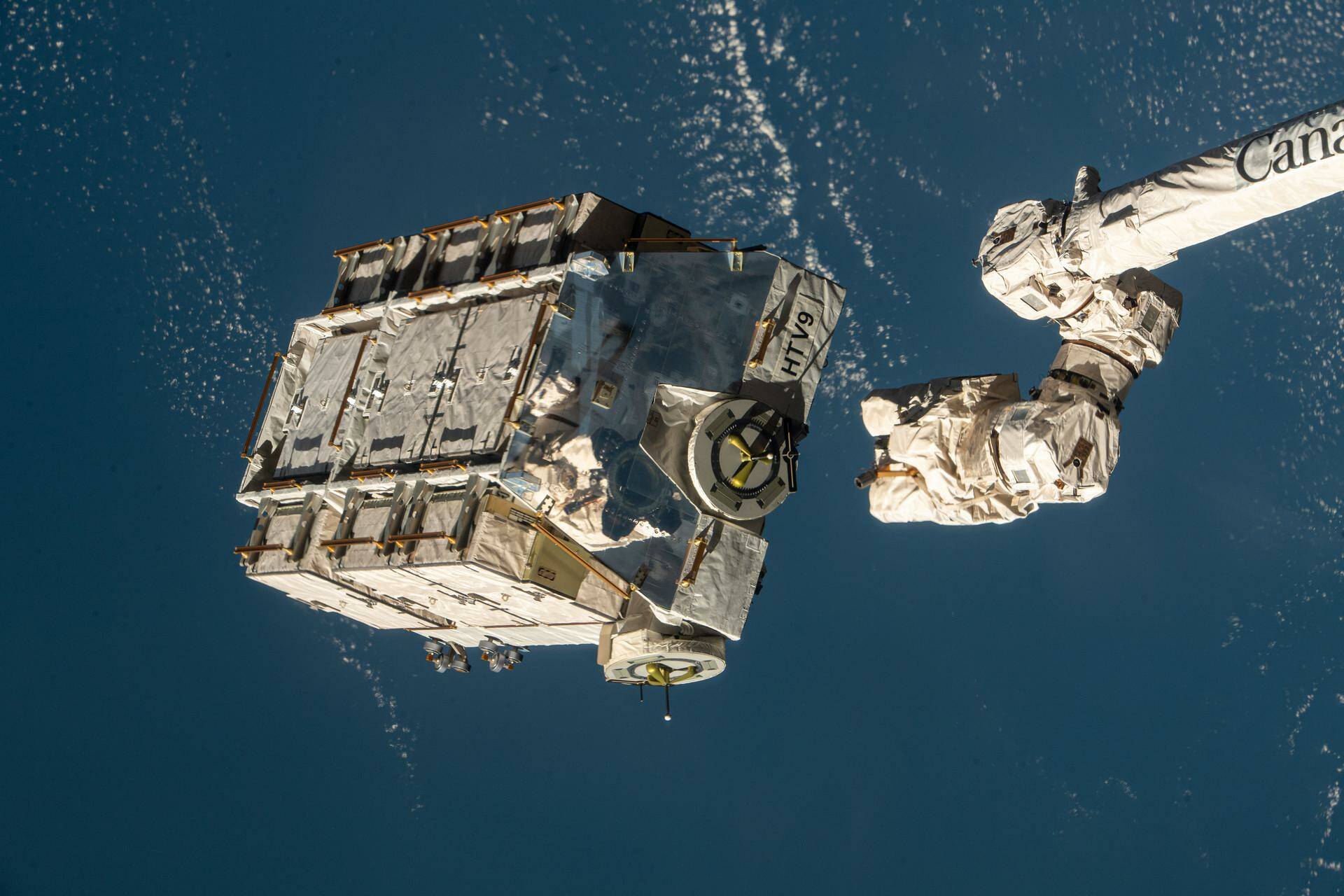A pallet of used batteries from the International Space Station (ISS) is due to re-enter the Earth’s atmosphere at some point in the next day, and some parts of the 2.6 metric ton mass are likely to hit the ground.
The pallet contains nine batteries in total and was released from the ISS on January 11, 2021. According to ESA’s Space Debris Office, entry is predicted at 1756 UTC on March 8. However, the date and time currently have an uncertainty of 0.4 days, which makes pinpointing the location of re-entry difficult until nearer the time.
ESA said: “The re-entry will occur between -51.6 degrees South and 51.6 degrees North.” This is quite a large area, but it is indicative of the inherent challenges in predicting a “natural” re-entry.
Not that jettisoning the batteries had been the original intent. Between 2017 and 2020, the aging nickel-hydrogen power packs previously used on the ISS had to be swapped out for more powerful lithium-ion units. The old batteries were mounted onto cargo pallets for the Japanese HTV freighters, which would then depart the ISS and make a controlled re-entry.
Some components might survive re-entry, but using the HTV meant that managers could target the waste for disposal in an uninhabited area.
Unfortunately, the Soyuz failure in 2018 threw a spanner in the works. NASA’s Tyler “Nick” Hague was onboard the ill-fated Soyuz when it was forced to abort its launch mid-flight with both Hague and Russian Alexey Ovchinin onboard. While the Russian spacecraft’s crew survived the incident after the crew capsule separated and made a ballistic return to Earth, plans for Hague to help with the battery swaps had to be put on hold.
This meant that the HTV freighter that brought the new batteries had to depart the station without the old ones, resulting in a left-over cargo pallet after the HTV program ended in 2020 with HTV-9. The program’s replacement, HTV-X, is not due to commence supply runs to the ISS until 2025.
Astronomer Jonathan McDowell noted that approximately half a ton of debris was likely to reach the Earth’s surface. While the probability of the debris causing any injuries is minimal, the German authorities, for example, felt it necessary to issue a warning to citizens, although they also concurred that “the probability of debris hitting Germany is considered to be very low.”
Holger Krag, head of ESA’s Space Safety Program Office, told the German news service Tagesschau: “It’s best never to touch a piece of debris, but these batteries that are used in space are no different than batteries that we use on Earth. So this doesn’t pose any major danger.
“When we talk about danger, it is more about the mechanical danger that comes from just the object falling.”
A warning of “luminous phenomena or the perception of a sonic boom are possible”, which actually makes it all sound terribly exciting.
Hopefully, when the time comes to bring the ISS itself back down to Earth, things will be a little more controlled. ®

Dr. Thomas Hughes is a UK-based scientist and science communicator who makes complex topics accessible to readers. His articles explore breakthroughs in various scientific disciplines, from space exploration to cutting-edge research.








